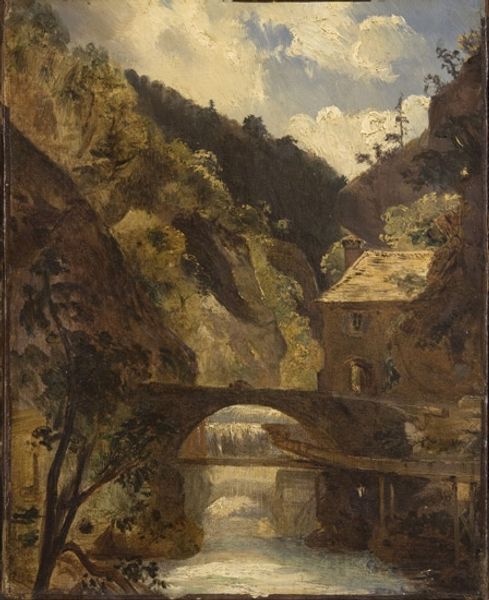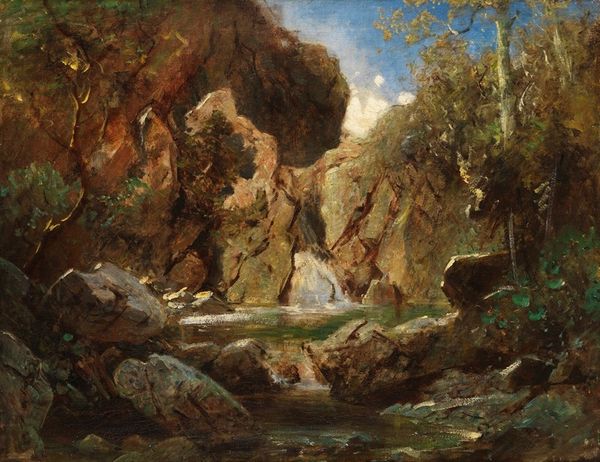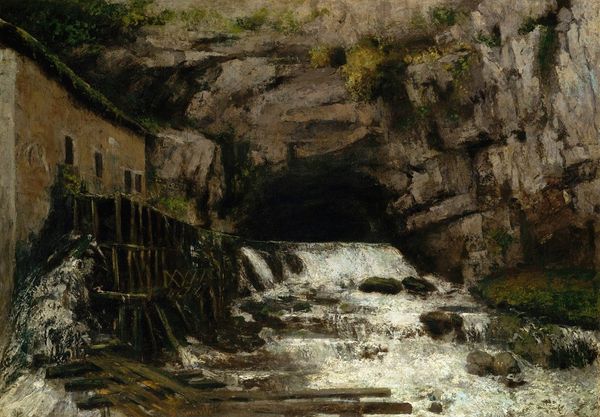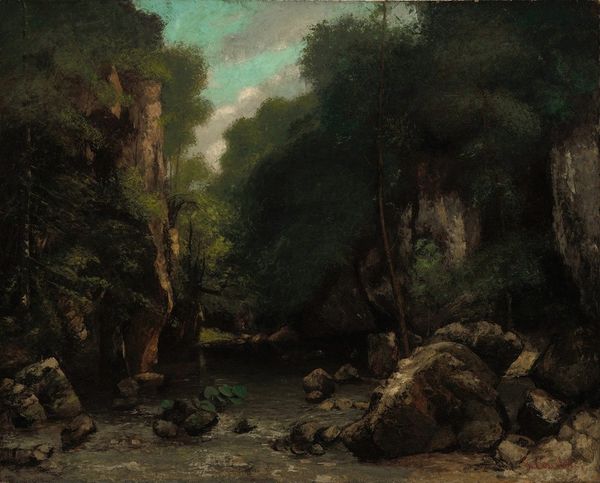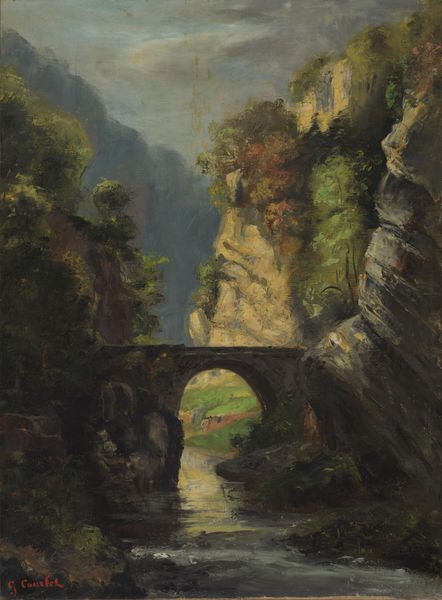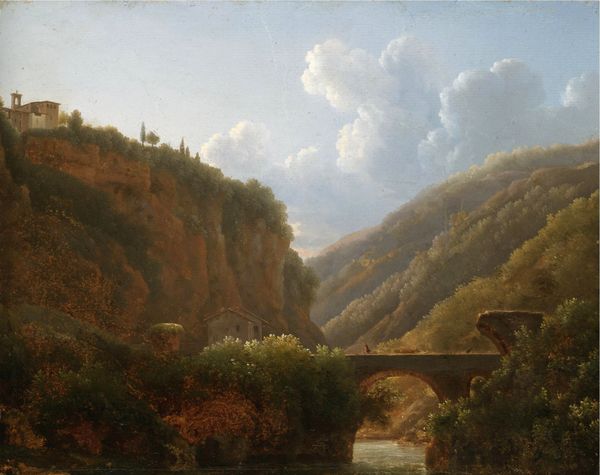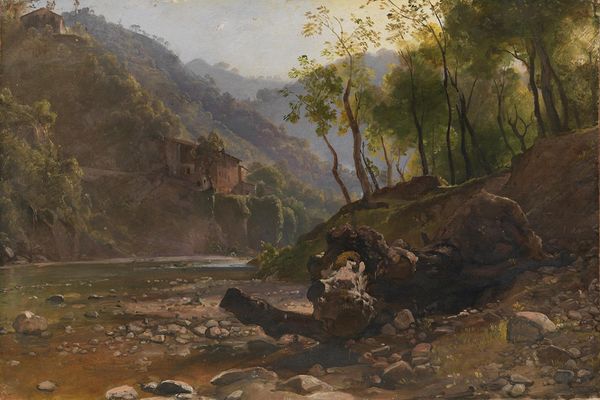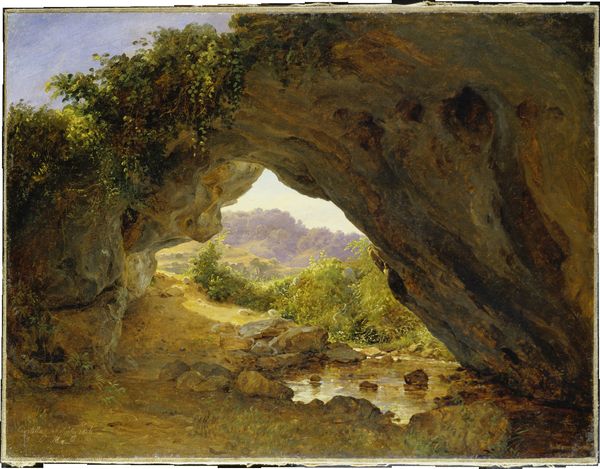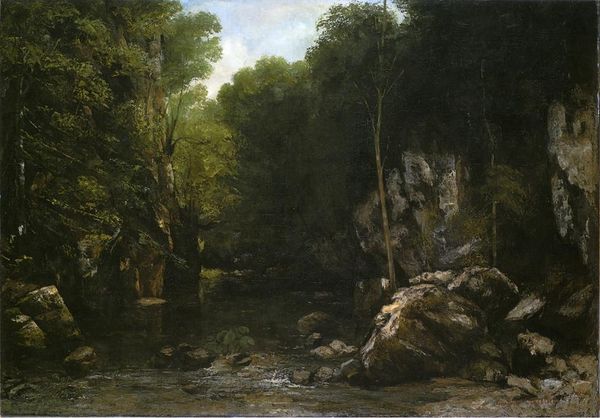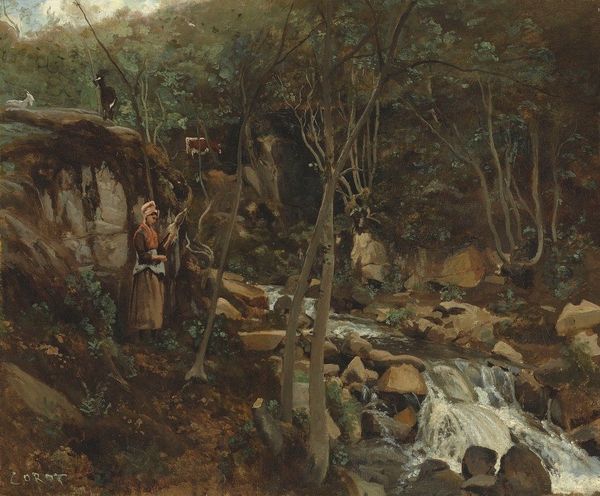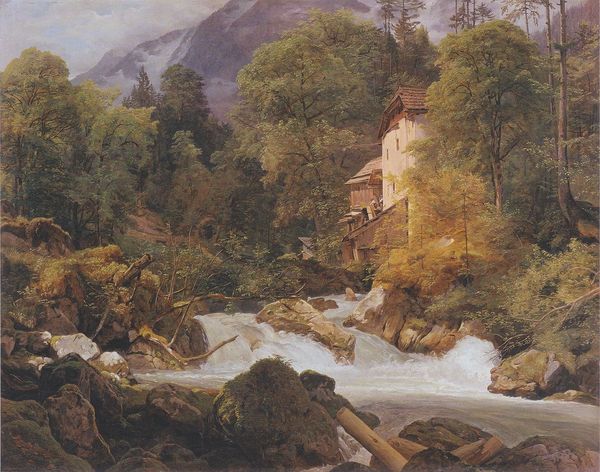
oil-paint
#
oil-paint
#
landscape
#
river
#
oil painting
#
rock
#
romanticism
#
water
#
charcoal
Dimensions: 31 x 37 cm
Copyright: Public domain
Editor: This is "Mountain Stream in the Auvergne" painted by Théodore Rousseau around 1830. It's an oil painting depicting a stone bridge nestled in a rugged, natural landscape. I'm immediately drawn to the contrast between the enduring stone and the fluid, rushing water. What symbols or deeper meanings do you find in this kind of scene? Curator: That’s a perceptive observation. Bridges, since ancient times, symbolize connection and transition—they represent the link between the known and unknown. In Romanticism, nature often stands in for something far more significant, acting almost as a mirror to the internal world. Editor: So the river represents constant change, or even the passage of time, while the bridge perhaps symbolizes stability or a yearning for permanence? Curator: Exactly! And think about the deliberate placement. Notice how the bridge gently interrupts the untamed nature, yet it seems at peace with it. Is it an imposition, or an integration? Editor: I see what you mean. The architectural lines contrast against the rocks. It's really thought-provoking to think of nature representing an inner psychological landscape and the bridge, humanity's mark on the world, attempting to navigate it. It really adds depth! Curator: Yes. This image encapsulates the romantic ideal, exploring how our emotional states can be intimately entwined with the landscapes that surround us, shaping the collective human experience. Editor: I hadn’t considered the psychological element of Romantic landscapes so explicitly before; I'll definitely be pondering that further. Curator: Indeed. It prompts a valuable dialogue about human nature's enduring presence in the art world.
Comments
No comments
Be the first to comment and join the conversation on the ultimate creative platform.
